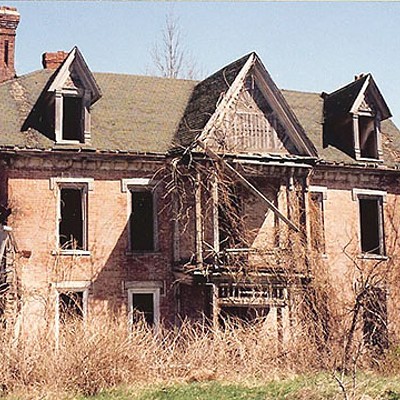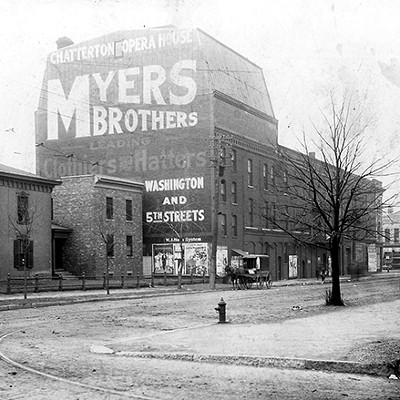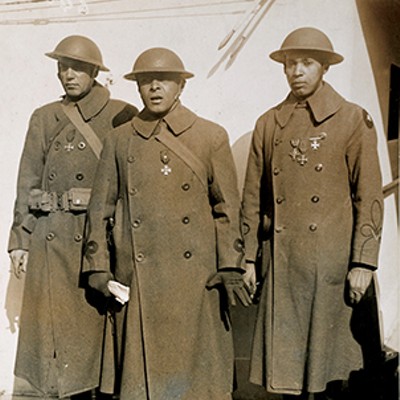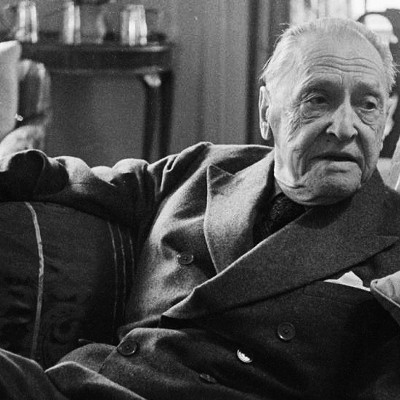In the hot summer of 1904, Springfield photographer Guy Mathis sallied forth from his downtown offices above Coe’s Book Store at Fifth and Monroe streets in his brand-new Cadillac to photograph the officers and men of the 7th Regiment of the Illinois National Guard. These guardsmen, known as the “Irish Brigade” of Chicago, were at Camp Lincoln, then at the extreme northwest city limits, for their annual summer encampment.
In those days, from the camp’s formation in 1886 until the 1920s, guardsmen would arrive here from all parts of the state to spend a week camping with their respective units for drilling, marching, parading, and range firing. The drudgery of soldiering was not the complete order of the day, however. There also was a genteel, romantic Old World social aspect to those encampments that dispelled the monotony of camp life and allowed sweet civilization to briefly intrude. Special excursion trains arrived in Springfield, bearing wives, sweethearts, and other interested visitors to the camp. Dinners, dances, and band concerts were held with chivalric and chauvinistic pride for the enjoyment and edification of the womenfolk and other, less fortunate civilians who were not privileged to be of military standing.
The subjects of Mathis’ photograph are the officers of Company E, 7th Regiment, perched in his 1904 Model B Touring Car in front of the old pavilion where band concerts were held. The photograph seems to capture the passing of the old order of things and the onset of the mechanized age, which would subsequently bring such profound and inevitable change to not just the military but also to society as a whole in just a few short years.
It was still the era of high-button shoes, cuspidors, marble-topped tables, and ostrich-plumed hats. In fact, the men of the 7th were on their way to the Louisiana Purchase Exposition in St. Louis — the World’s Fair of 1904 — when they stopped in Springfield for their encampment. But the transportation revolution had begun, and the world’s uneasiness with the aeroplane and automobile seems to be metaphorically symbolized by the incongruously placed officers of Company E. It was still a horseman’s world — in fact, the Springfield papers of the day are loaded with advertisements for phaetons, buggies, carriages, wagons, and surreys — and these chaps look as if they’d be more comfortable atop spirited steeds than in one of the first Cadillacs ever built. Who could blame them, having to ride in a car with no roof, doors, or windows?
According to Cadillac: The Complete History, by Maurice Hendry, just 1,895 Cadillacs were produced between March 1903 and March 1904, when a fire destroyed the factory and temporarily put the firm out of business, and so we know that Mathis’ car is one of the very first ever made. The Model B (pictured) with tonneau (rear seating compartment) sold for $850 and could be purchased with a down payment of $10. The advertising literature touted the first Caddy as something of an SUV, claiming, “Wherever a Wheel Will Turn, a Cadillac Will Go.”
The advertisement, which showed the car climbing a steep grade, further stated that “the Cadillac is the only automobile embodying broadly utilitarian principles. It is a strong, stylish, powerful touring car that will accommodate four people comfortably; that is as smooth-running and reliable as any high-priced machine. Remove the tonneau, and it becomes a smart runabout — superior to every other in simplicity and ease of operation; equaled by none in speed, strength, appearance or mechanical excellence.”
According to Tim Pawl of the Cadillac-LaSalle Club Museum & Research Center, the automobile pictured was a single-cylinder model but was lightweight and could make 35 mph, faster than most multicylinder cars. The engine was in the middle of the car, under the seat, and the hood was for storage — the radiator took up only the first 6 inches of space.
The Right Rev. George F. Seymour, first bishop of the Episcopal Diocese of Springfield, was not bothered so much by the impending technological changes as by the impending etymological changes that motor travel foretold. He struck a blow for serious wordsmiths everywhere when he penned the following letter to the New York Tribune, later reprinted in the Springfield Illinois State Journal:
“Sir: A foreigner has lately arrived among us whom we ought not to allow to take out his naturalization papers and become one of us. I appeal to the Tribune to help us in this emergency. He himself is respectable and is destined to become useful. It is the name which irresponsible people have given him which is the source of distress — ‘automobile.’
“This word is a monstrosity, and ought to be banished under penalty of death if it attempts to return. It blends two languages — ‘autos,’ Greek, and ‘mobilis,’ Latin. We must not allow this mongrel beast to remain.
“As a substitute, since the taste of our inventors and manufacturers is classical, we humbly suggest ‘autokineton,’ which is pure Greek and has the same meaning as the distressing word ‘automobile.’
“Will not the newspaper press generally, which is so helpful in the cause of good morals, good laws, good style and good words, help us to drive away the unendurable word ‘automobile,’ and replace it with a much more euphonious and attractive term, which has the merit of being correct, ‘autokineton’?”




















